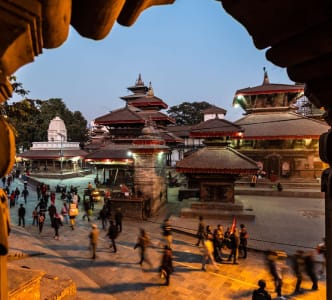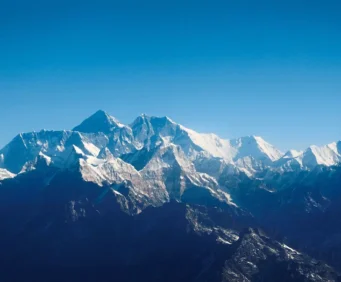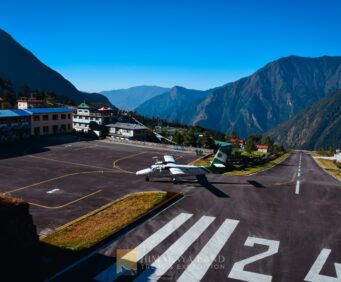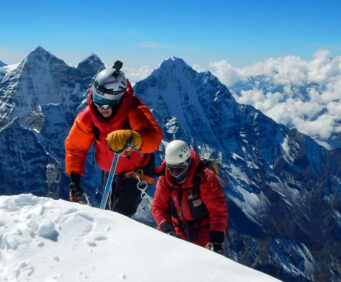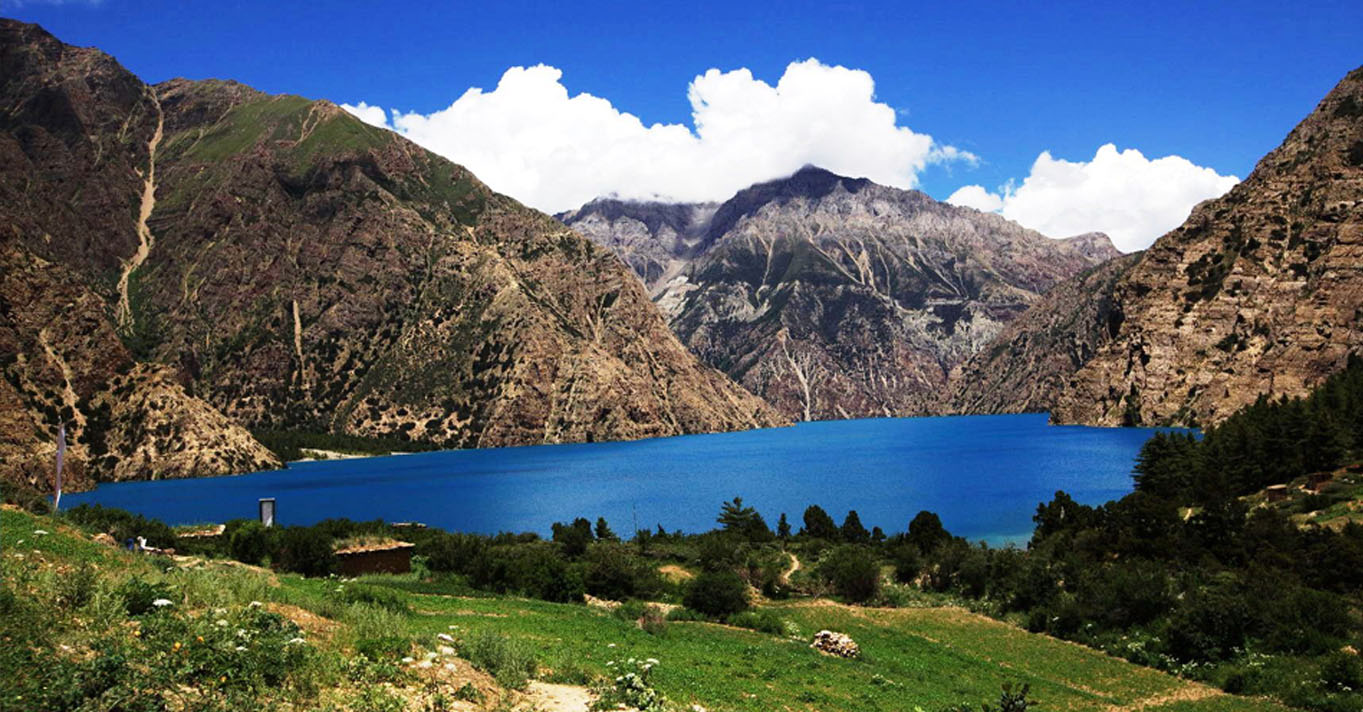
Guide to Trekking in the Dolpo Region
18th February, 2024 - Posted By: Himalayan AbodeHeading into the westernmost regions of Nepal, you’ll stroll beneath the shadow of sharp peaks, visit remote villages that haven’t changed in generations, and hike through fields of brightly colored barley and buckwheat. Here in the Dolpo region, which is a captivating land of astounding natural beauty, you’re more likely to come across a horse route winding through the mountains than a paved road. In this blog, we discuss the Guide to Trekking Dolpo.
Imagine a world with windswept, arid peaks, and limitless blue skies, where high-altitude farming settlements coexist peacefully with traditional Tibetan culture.
For good reason, daring tourists have been drawn to this alluring alpine region for many years. Despite, or maybe because of, the area’s isolation, the Dolpo offers some of Nepal’s greatest trekking opportunities.
The Upper Dolpo Trek (also known as the Inner Dolpo Trek) and Lower Dolpo Trek (also known as the Outer Dolpo Trek) are two of the most famous hiking routes in the area, offering equal parts excitement and difficulty. However, the Dolpo offers a wide range of hikes that suit all kinds of hikers.
To fully experience this intriguing region, more adventurous hikers can even combine Dolpo’s two main routes; however, those with limited time can still enjoy a fulfilling walk in approximately a week.
Though it makes up about 15% of Nepal’s total area, the Dolpo region has not undergone much modernization throughout the years. Trekking in Nepal has long been associated with breathtaking alpine landscapes and a lively local culture; this is particularly true of the Dolpo.
You’ll find breathtaking views of high-altitude deserts broken up by the towering peaks of the Himalayas, pastoral and agricultural communities nestled in incredibly verdant valleys, and intriguing religious customs shaped by the Tibetan plateau’s closeness. Notably, the Bön religion, which is native to this region of the Himalayas, is practiced by the Dolpo people in addition to Buddhism.
If you have previously gone hiking in Nepal, you will have noticed unique differences in the Dolpo people’s language, customs, and clothing that will enhance your time here. Additionally, your knowledgeable trekking team and guide will be able to provide you with more information on the rich customs of the Dolpo when you visit with us. Continue reading to learn more about what to anticipate from a trekking trip in the Dolpo region.
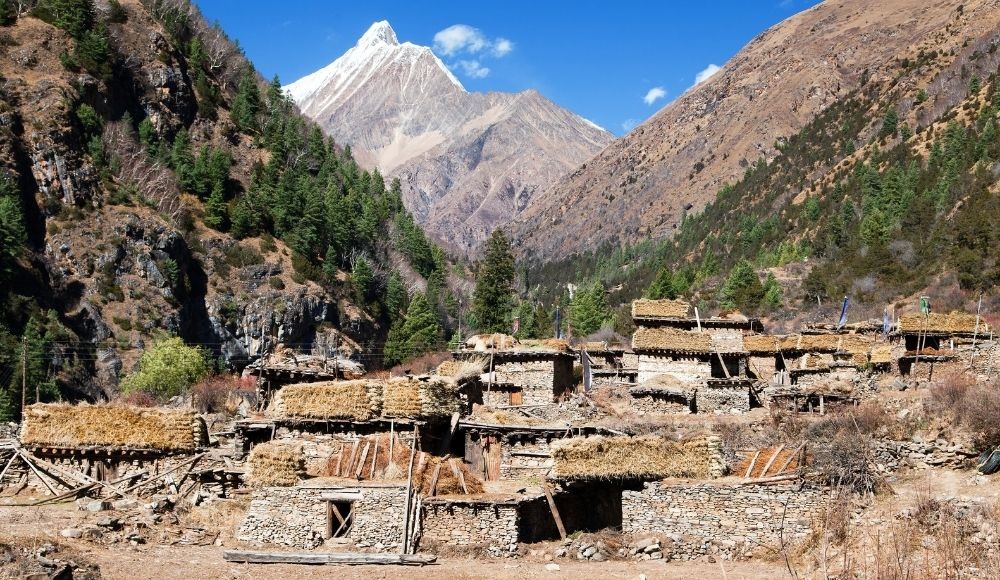
To what extent is Guide to Trekking in the Dolpo Region difficult?
Hiking in the Dolpo can be as challenging as you choose it to be! Your imagination is the only restriction on the length and difficulty of your trek in this amazing region of Nepal.
You can choose to go on life-changing extended trips such as our 24-Day Upper Dolpo Trek or simply do a satisfying six-day journey from Jumla to Dunai. If time is of the essence, you can even spend four days on the four-day Kagmara La Trek and experience the beauties of the Dolpo.
But hiking in the Dolpo typically entails climbing to high altitudes, regardless of how long your trip is. In this area, several of our most well-liked treks reach elevations of 4,000 or even 5,000 meters, where you may encounter altitude sickness symptoms like headaches, nausea, and appetite loss.
The best treatment for this illness is to descend from high elevations as soon as possible, though your doctor may prescribe some drugs to lower your risk of developing it.
We typically only advise people with prior experience traveling to high elevations to hike in the Dolpo due to the lengthy distances and high altitudes they will encounter. We require trekkers in the Dolpo to acquire travel insurance that covers the cost of any fees involved with emergency evacuation because the remoteness of the area also means that medical stations are few and far between.
Thankfully, we are highly qualified guides and are prepared to lead you over the Dolpo mountains. They will select the most secure trekking paths, keep an eye out for any indications of altitude sickness in your group, and modify the speed or itinerary of your Himalayan adventure as needed.
Weather Conditions- Guide to Trekking in the Dolpo Region
Nepalese trekking is highly dependent on the weather. The trekking season coincides with the summer monsoon in most of the country when heavy rains wash off roads and routes.
Your trekking plans, however, might be a little more flexible when it comes to the weather in the Dolpo.
Located under the majestic Dhaulagiri range’s rain shadow, this region of Nepal is protected from the worst of the summer rains.
The danger of flight cancellations on the approach to the trailhead will be your major problem if you’re walking in the summer rather than the state of the trail. Because of this, the majority of visitors who take the Upper Dolpo Trek and other hiking trails in the area opt to go in the spring or the fall.
April is when the best trekking season starts in the spring. The ideal months to trek in the Dolpo during the fall are September and October when there is still a little danger of snowfall. The best time to see the mountains is in the summer when the temperature is at its most pleasant level.
Of course, trekking is also feasible in the late autumn and early spring. We advise sticking to shorter hiking paths that avoid the greatest heights, but you’ll enjoy crowd-free trails and particularly genuine cultural encounters.
We also generally advise against trekking in the Dolpo during the winter. Due to the strong likelihood of heavy snowfall, many of the region’s most beautiful alpine passes will close. Additionally, some higher-altitude villages are likely to become deserted as their inhabitants descend to lower communities to escape the cold.
But if you aren’t sure which season is right for your trek in Nepal, don’t worry—the experts at We will help you develop an itinerary to exceed your wildest expectations.
Way to go to the Upper Dolpo
You’ll have plenty of options to choose from when you’re ready to start trekking in the Dolpo. While the legendary Upper and Lower Dolpo Treks are the region’s most well-known hiking routes, western Nepal offers many other fantastic hiking options.
In around six days, a quick hike will take you from Dunai’s marketplace to the enchanted Phoksundo Lake. The Dho Tarap walk, which is regarded as the most well-liked walk in the Dolpo, offers hikers the opportunity to see the lake.
This moderately long yet strenuous trip will take you across several high-altitude mountain passes and into remote monasteries and towns that showcase pure Tibetan culture. Combining the isolated Mustang region with the Dolpo region can also result in an incredible overland journey that takes you well off the usual route.
If you don’t know where to begin, our experts will be pleased to talk with you and help you organize your personal Dolpo hiking trip.
While trekking in the Dolpo, you’ll be hiking for up to six hours each day, covering impressive distances under the power of your own two feet. You may also be climbing to heights greater than 5,000 meters in altitude, which means that even your shorter days on the trail can represent a significant challenge.
The good news is that treks in the Dolpo region are much less crowded than other treks in Nepal. As a result, our Dolpo trekking itinerary can be flexible, allowing us to adjust our pace and build additional acclimatization days into our itinerary. Read on to discover more about the unique accommodations you’ll enjoy while trekking in the Dolpo.
Accommodations Guide for Trekking in the Dolpo Region
The Dolpo region in Nepal is known for its remote and conservative communities. Trekking here provides an exhilarating wilderness experience in the extreme west of the Himalayas. Previously, trekkers relied on tents brought by porters due to cultural traditions, making tea house-style accommodation inaccessible.
We are pleased to offer Dolpo hiking itineraries that blend cozy trekking lodgings with the occasional night spent outside. We’re delighted to inform you that this situation is beginning to change. Hikers can now stay in comfortable, family-run teahouses every night while hiking to Phoksundo Lake.
Since the Dolpo region has not been fully impacted by modernization, walking here is truly an adventure in the wilderness.
While there may be Wi-Fi and cell phone service in some villages, it’s better to lower your expectations and realize that you might not have access to either for most of your journey in Nepal. Here in Dolpo, many believe that a satellite phone is the most dependable means of contact in an emergency.
In the same way, you might want to think about packing a portable charger so you can recharge your phone, camera, and other electronics. However, adventurous travelers will soon find that the Dolpo region offers once-in-a-lifetime experiences.
Meals Guide for Trekking in the Dolpo Region
You might not find pizza and apple pies on the menus of your teahouses and trekking lodges because the Upper Dolpo Treks and other climbs in the area follow meandering paths through some of Nepal’s most remote alpine scenery.
Rather, a continuous diet of dal bhat will bolster your efforts on the route. Throughout the Himalayas, this traditional dish comprises rice and lentils accompanied by a substantial side of spices and seasonal vegetables.
You may expect to eat plate after plate of this delicious cuisine when trekking in the Dolpo region, where it is a specialty. Local farmers cultivate the beans used to make this dish in expansive fields. While dal bhat typically includes vegetables, some versions incorporate chicken or goat.
Boiled potatoes, tsampa, a sort of roasted barley flour, and fish curry made with Himalayan snow trout are some more typical dishes in the Dolpo.
Conclusion
Trekking in Nepal is a once-in-a-lifetime adventure, regardless of your route. However, you’re in for a great treat if you go on an expedition into the Dolpo region with us. You’ll undoubtedly go on an exciting journey whether you go for the Upper Dolpo Trek, Lower Dolpo Trek, or any of the fantastic shorter treks in Nepal’s western Himalayas.
The Dolpo is a location of breathtaking natural beauty, encompassing wide alpine deserts and towering mountain peaks.
Additionally, the welcoming residents and distinctive Tibetan culture of the Dolpo will make you feel at home as soon as you arrive.
Recent Posts
